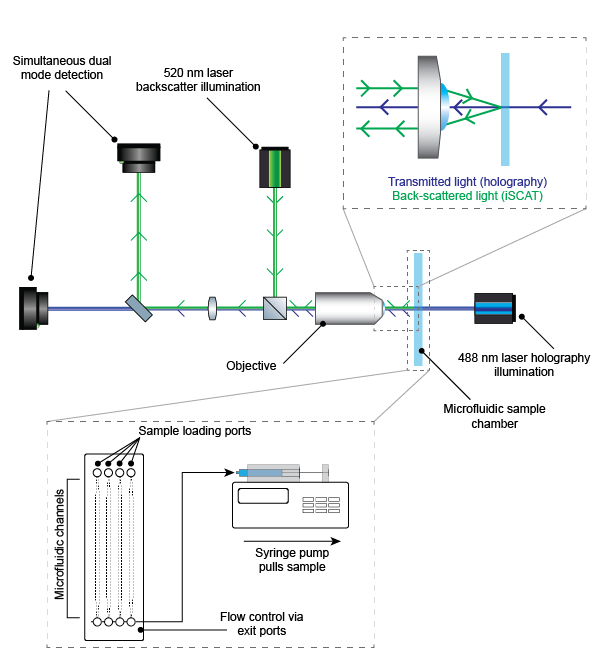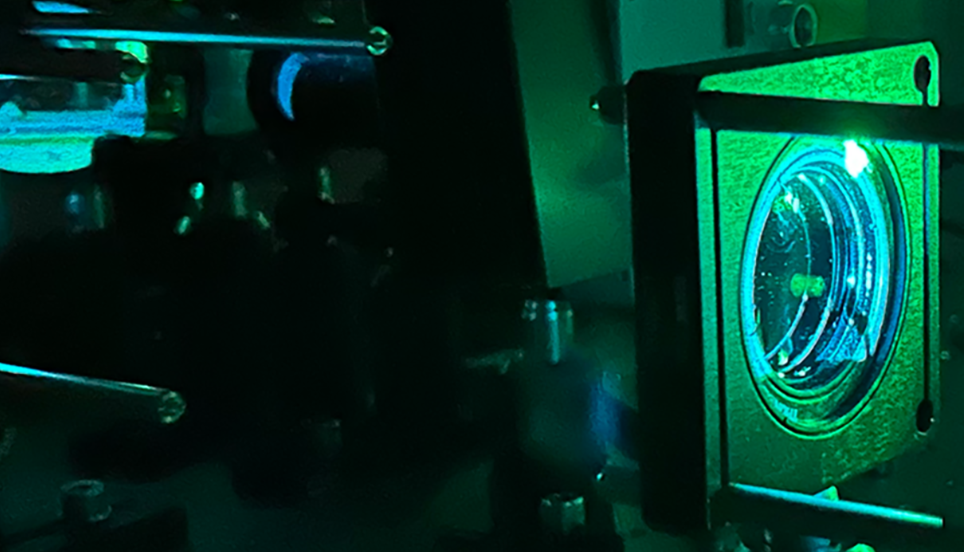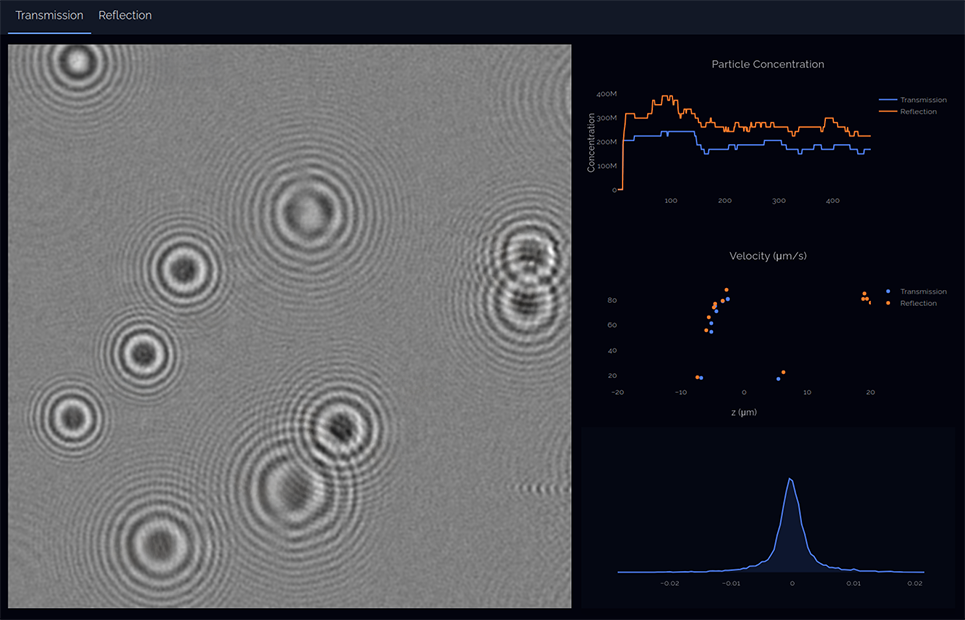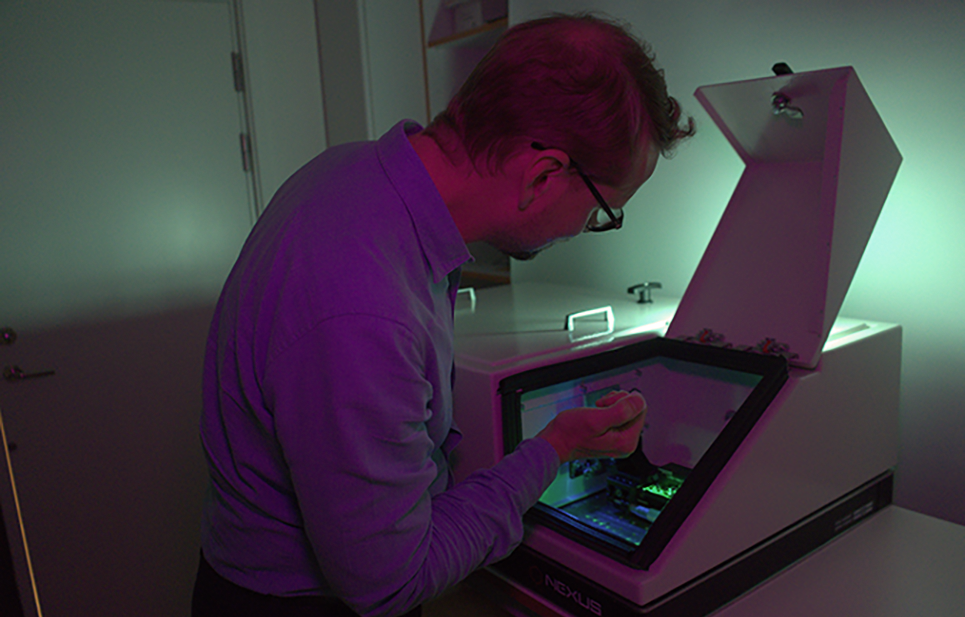General Description
Improved nanoparticle analysis with DAISY

Fundamentally, the DAISY instrument is two high precision microscopes functioning together to simultaneously count, record, and characterise individual particles as they pass through a microfluidic channel. As with standard nanoparticle tracking analysis (NTA), DAISY records and analyses the movement of particles, due to Brownian motion, to determine particle size. This however is where the similarity to existing NTA ends.
DAISY provides unprecedented information on a particle-by-particle basis, reporting refractive index (linked to water content, density, material etc.) as well as internal mass distribution (allowing easy identification of aggregates or hollow particles within your sample). DAISY achieves this by combining digital holographic microscopy (holography) and interferometric scattering microscopy (iSCAT, back-scatter imaging). Combining the direct determination of refractive index made possible by holography with improved detection limits of back-scatter imaging. DAISY is even able to determine the size of particles in a purely optical fashion, wholly independent of Brownian motion and therefore insensitive to fluctuations in temperature or sample viscosity. Whilst extracting and combining this information is a complex process, our software provides accessible and informative reports with little to no user input or prior knowledge about sample characteristics required.
As well as the unprecedented detail provided by DAISY analysis, a further strength lies in the sample handling of DAISY. The whole sample handling process has been designed with the specific needs and behaviours of nanoparticle samples in mind. First and foremost, DAISY minimizes sample requirements, as little as 10 µl of dilute sample is required per analysis. Furthermore, our microfluidic design relies on drawing sample into the channel under negative pressure from a loading port as close as possible to the point of analysis. This minimizes contact time of the sample with surfaces and therefore minimizes adsorption which imparts errors and biases in measurements.
Key Features
- Hydrodynamic diameter
- Optical diameter
- Refractive index
- Morphology/shape
- Particle density
- Concentration
- Size range 50nm – 5 µm
- Single-use microfludic chips


